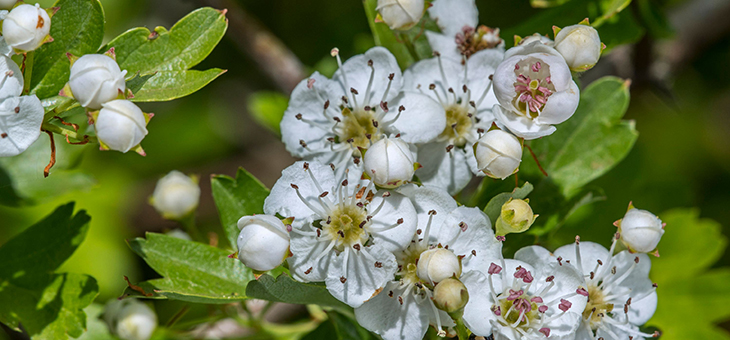We all know about poor air quality in towns and cities, what with traffic, lack of green spaces and gardens being paved over to make way for hard landscaping and driveways.
The World Health Organization calls air pollution the “world’s single biggest environmental health risk”, but despite increasing awareness of the effects of air pollution, regulation is thought to be falling behind – particularly in Australia.
It is argued that Australian air pollution is inadequately regulated, monitored and enforced and that approximately 3000 premature deaths each year are linked to urban air pollution.
But there are particular super plants that can go some way to soaking up pollution in traffic hotspots, new RHS research has found.
Read more: How safe is the air quality in your home?
“It’s easy to get environmental benefits such as cooling, flood prevention, pollution capture simply by growing plants in our gardens and houses,” says RHS principal horticultural scientist Dr Tijana Blanusa. “Plants have the amazing ability to do all these things unseen, but not all are equal. Some plants are particularly good at, for example, supporting wildlife, but many are able to provide multiple benefits.”
Here, Dr Blanusa and fellow RHS expert Leigh Hunt recommend ‘super plants’, environmental multitaskers that could help soak up some of that pollution in different situations in your garden and home …
Hedges
Hedges are great at filtering pollution from the air, trapping it on their rough/hairy leaves and stems, until it is washed to the ground by the rain or falls off with the leaves.
Some of the top plants to use for hedging in Australia include those in the genus Acmena. It’s commonly referred to as lilly pilly and is very widely used for hedging due to its naturally compact habit and all-around adaptability.
Westringia is another great hedge option because of its tough nature and subtle variegated foliage.
Syzygium paniculatum has colourful new foliage and bird-attracting edible fruits, which make it a beautiful edition to your garden.
Plant hedges between the source of pollution and where you are, so usually between the road and the house. Bigger is better, so aim for at least 1.5m high and 1m wide.
Pots
Containers are useful for growing all manner of plants on areas of paving, balconies and if you rent, you can take them with you when you move. Include plants to support wildlife, from pollinating insects to invertebrates. Plants with different structures (shrubs, perennials, climbers) will all provide different habitat, with flowers and berries providing food.
Read more: Want a better view of the wildlife in your garden?
Even a common climber such as grapevine (Vitis vinifera), which could be trained from a pot up a house wall to create a green surface, will provide shelter. It will also produce bunches of summer grapes if you’ve chosen a fruiting form.
Training over pergolas will provide summer shade and winter sun.
Borders
Borders provide the most space. Bigger is better, so if you have room for a tree (great air cleaners), plant one. A great small tree is our native Corymbia ‘Summer Red’.
And this tree will also transpire water from its leaves, helping to suck excess moisture out of the ground when in growth.
Green roofs
These plants help cover hard roof surfaces that collect the sun’s heat in the day and give it off at night, making our urban areas warmer, and particularly more uncomfortable during heat waves.
Traditionally a green roof is a mat of sedums that grow in 5cm of lightweight growing media. However, if you can include a deeper substrate, it’s worth considering other plants, Kangaroo paw works really well in rooftop gardens and they’re almost impossible to kill. There are a huge variety of colours to choose from, so no matter what your rooftop garden colour scheme, you’re bound to find one that will work.
Hardy herbs and spices such as rosemary, lemon thyme, chamomile, parsley, oregano, sage, mint and chillies are easy to grow and you’re rewarded with delicious flavour enhancers for your rooftop garden barbecue!
Houseplants
Bringing the outdoors inside has become all the rage. As well as being beautiful, houseplants help improve air quality by taking in air through the pores in the leaves and stems, and removing impurities.
Read more: The house plants that can improve your health dramatically
These include compounds such as carbon monoxide and particulates (dust-like particles) and volatile organic compounds (VOC) – a large group of substances emitted from furnishings, detergents and paints, which can have adverse health effects on humans.
Simple houseplants to start with include the peace lily (Spathiphyllum wallisii), with its white long-lasting flowers. Just keep the compost moist and position out of direct sunlight, and it will grow with ease.
Do you have any of these in your home or garden? Do you have a green roof?
-With PA
If you enjoy our content, don’t keep it to yourself. Share our free eNews with your friends and encourage them to sign up.

